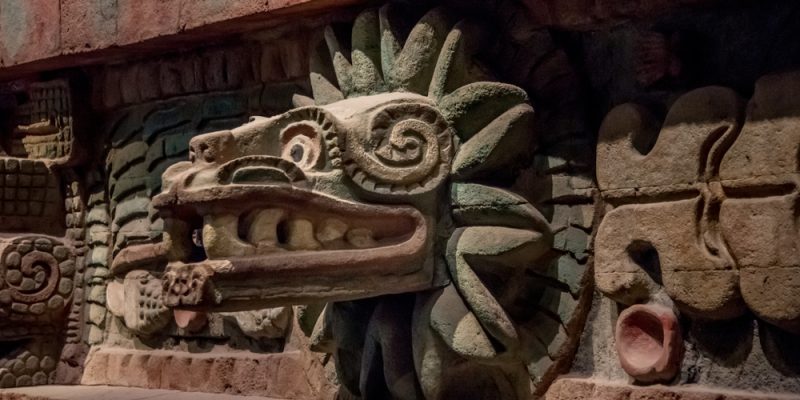We explain what the cardinal points are and what they are used for. Also, its different uses throughout history and its importance for different cultures.

What are the cardinal points?
The cardinal points are the main geographical orientation references and are used to determine directions on the Earth's surface. These points are north (N), south (S), east (E) and west (W).
In addition to these four, also There are intermediate points, which are the northeast (NE), the northwest (NO), the southeast (SE) and the southwest (SO) which help with more precise orientation. From this geometric operation derives the “compass rose”, a cross that shows the cardinal points and that has been used for navigation and orientation since ancient times.
The names of the four cardinal points They have their origin in German mythology: Nordri (north), Sudri (south), Austria (this) and Vestri (west). These terms derived to modern Germanic languages, such as English (north, south, east, west) and the german (north, süd, ost, west)and from there to the Latin ones, like Spanish.
In Spanish, the cardinal points can also be named as septentrión or boreal (north), meridión or austral (south), oriente, Levante or naciente (east) and occidente or poniente (west).
On the other hand, the name cardinal points comes from the Latin term carduswhich referred to the main axes of orientation of Roman constructions.
Characteristics of the cardinal points
The cardinal points have the following characteristics:
- There are four main cardinal points: north, south, east and west.
- There are four secondary cardinal points: northeast, northwest, southeast and southwest.
- They have been used since ancient times for orientation and navigation.
- Different cultures usually relate them to religion and gods.
History of the use of cardinal points

The ancient Egyptians were one of the first civilizations to use the cardinal points for orientation. They were guided mainly by the stars, in particular the North Star, which helped them determine the north and, from there, the rest of the orientations.
For its part, The Greeks and Romans used the constellations and the sun to determine directions. The Romans, in particular, introduced the use of cardus (north-south) and decumanus (east-west) in the planning of their cities and military camps.
During the Middle Ages, maritime navigation became more sophisticated. Maps and nautical charts began to include cardinal points, which facilitated maritime exploration and trade of the time.
Already in the Renaissance, maps began to be represented with north at the top, a convention that continues to the present.
Today, global positioning systems (GPS) use satellites to determine location on the Earth's surface and cardinal points to guide users in their navigation.
Cardinal points in different cultures

The cardinal points have had different meanings and symbolism in different cultures.
For Norse mythology, for example, The dwarfs Nordri, Sudri, Austri and Vestri held the four cardinal points of the world. These beings represented the directions and guaranteed the stability of the universe.
Besides, In Aztec cosmology the universe was divided into four quadrants or directions each associated with a cardinal point and governed by a specific god. For example, Quetzalcoatl was considered the ruling god of the west.
Within Chinese culture, they not only serve for navigation and orientation, but also have symbolic and cosmological meaning. Thus, the cardinal points are linked to elements of nature, colors and planets. The east, for example, is associated with wood, the wind, the planet Jupiter and the color green. Likewise, in the Chinese tradition of feng shuithe houses are oriented according to the cardinal points to promote harmony and well-being.
In Hindu tradition they also have a spiritual and religious meaning. Temples are usually oriented according to the cardinal points and each direction is believed to be governed by a god. The north, for example, is ruled by the god Kubera.
document.addEventListener(“DOMContentLoaded”, (e) => {
var sliderContainer, slider;
sliderContainer = document.getElementById(‘block_971d964e8235a1e88ffd2fde8e59380e’);
if (typeof initSlider !== ‘function’) {
console.log(‘Swiper haven\’t been loaded’);
sliderContainer.className += ‘ fw scroll-snap’;
return;
};
options = {
direction: ‘horizontal’,
speed: 1000,
slidesPerView: ‘auto’,
// slidesPerGroup: 1,
centerInsufficientSlides: true,
// centeredSlides:true,
spaceBetween: 15,
breakpoints: {
720: {
// centeredSlides: false,
// slidesPerGroup: 2,
spaceBetween: 25
},
},
pagination: {
el: ‘.swiper-pagination’,
type: ‘bullets’,
clickable: true
},
}
slider = initSlider(sliderContainer, options);
})
References
- Rodríguez Alfonso, C. (2021). Orientation: cardinal points. Rebumbios.com. https://www3.gobiernodecanarias.org/
- Santillana. (2024). The cardinal points. Santillana Blog. https://blog.santillana.com.ec/
- Vikings.org. (sf). The 9 worlds of Norse mythology. https://vikingos.org/





